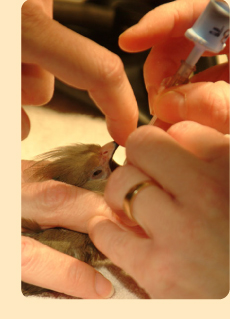
Because birds are generally fragile and many species are very small, it can be difficult to handle them for tests and treatments.
Microsurgery is frequently performed on smaller birds, even patients as small as 12 grams (the size of a red grape). Because surgical instruments used by animal vets are too large, Aviary staff use human heart and eye instruments to handle delicate bird tissue.
Anesthesia is needed for surgeries, but is especially challenging when working with birds. When under treatment, a bird is given gas anesthesia first through a mask and then via a breathing tube. But because breathing tubes do not exist for animals that are smaller than a kitten, Aviary staff make the tubes from intravenous catheters.
Anesthesia masks are also hand-crafted to fit each bird. For example, a 2-liter soda bottle is modified to make an anesthetic mask that will fit a toucan’s bill.
Another challenge is that birds usually don’t breath under anesthesia and must be manually ventilated throughout the entire surgery. The veterinary technicians breathe for the bird and monitor its vital signs carefully using an ECG, pulse oximeter, and other equipment.
After surgery, the patient is placed in an Intensive Care Unit where it receives extra supportive care, such as fluids and hand-feedings to aid in its recovery.

